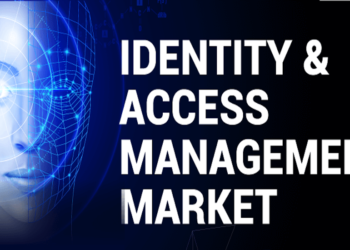The term Identity and Access Management (IAM) refers to the systems and procedures used by any organization to control and manage the resources that are accessible to its personnel. It’s critical to remember that IAM is a conceptual discipline in the strictest sense. IAM strategies and policies are enforced by organizations through the use of IAM solutions, which are software implementations.
By consolidating identity information for each person, automated processes can be driven and made easier while maintaining the associated permissions and security. Your organization’s IAM will be more accurate and manageable once it has been standardized and synchronized, enabling secure, appropriate access for all users.
Challenges to Tackle
The overall security system is improved with a solid identity and access management (IAM) approach. It gives businesses the ability to increase employee productivity. Strong IAM solutions are nonetheless needed because of the changing nature of cloud computing and the scattered, mobile workforce. a few fundamental issues with IT security and the IAM approach’s solutions
Distributed Applications
The distributed applications have been made possible by the expanding cloud-based and software-as-a service (SaaS) applications. Users now have the freedom to access corporate software and collaborative tools (such as Office 365, Salesforce, etc.) from any location at any time. To secure logins, managing identities is absolutely necessary. Users struggle with password management, and IT teams battle support tickets and costs. Administrators may connect, manage, and simplify access privileges with the IAM solution.
Regulatory Compliance
Regulations pertaining to compliance and corporate governance are the only drivers of IAM spending. The following practices can help eliminate the needless strain of regulatory compliance and improve audit procedures. IAM encourages adherence to certain legal requirements. It enables you to adhere to well-known compliance standards like GDPR and HIPPA. It streamlines regulatory compliance, automates audit reporting, and produces thorough results.
Password Security
It is impossible to keep track of different passwords and go through various authentication processes in the expanding cloud infrastructure. Single Sign-On (SSO) capabilities are provided by IAM solution installations for SaaS, cloud, online, and virtual applications. SSO can expedite access procedures and integrate password management across many domains.
Importance
Organizations cannot undervalue the value of IAM. To ensure that there is adequate security for the data and sensitive information, enterprises must implement an IAM system that is dependable and effective. IAM solutions for organizations are offered by a variety of companies. The solutions include access management, single sign-on (SSO), and multi-factor authentication (MFA). Additionally, the solutions provide a directory for securely storing identity and profile information so that only the information that is necessary and pertinent can be shared. This reduces the likelihood of security breaches by making it more difficult for attackers to compromise user credentials.
Conclusion
The IAM solution’s deployment allows for safe interactions and transactions in the modern digital world. You require a reliable technology partner, such as Successive, for an IAM installation to be successful. IAM and DevOps products from Successive Technologies are dependable, integrated, and have components that may be customized. Our technologically advanced solutions enable your company to adopt an IAM solution quickly and easily.





